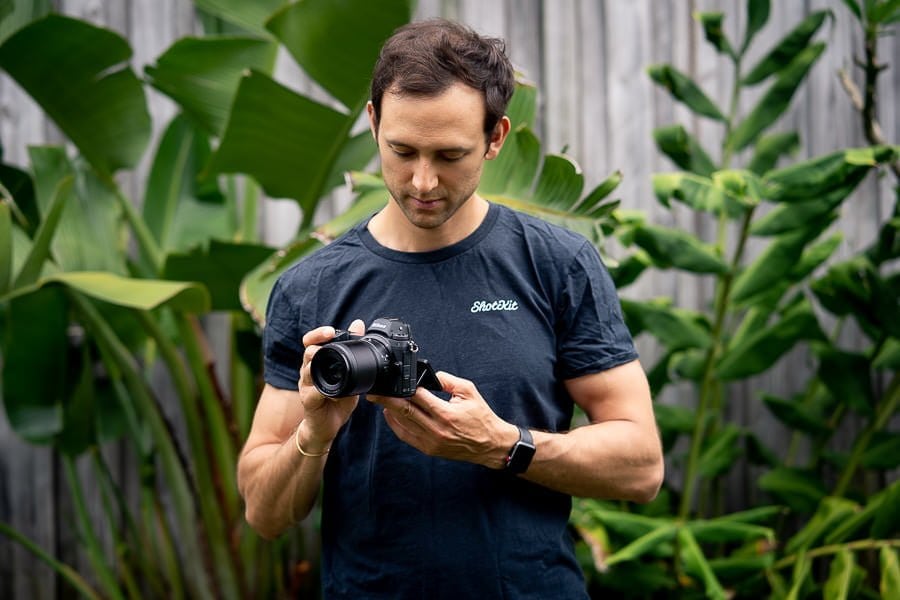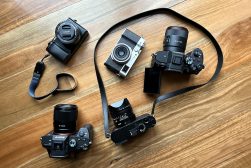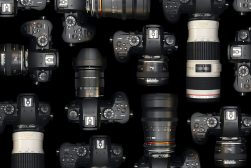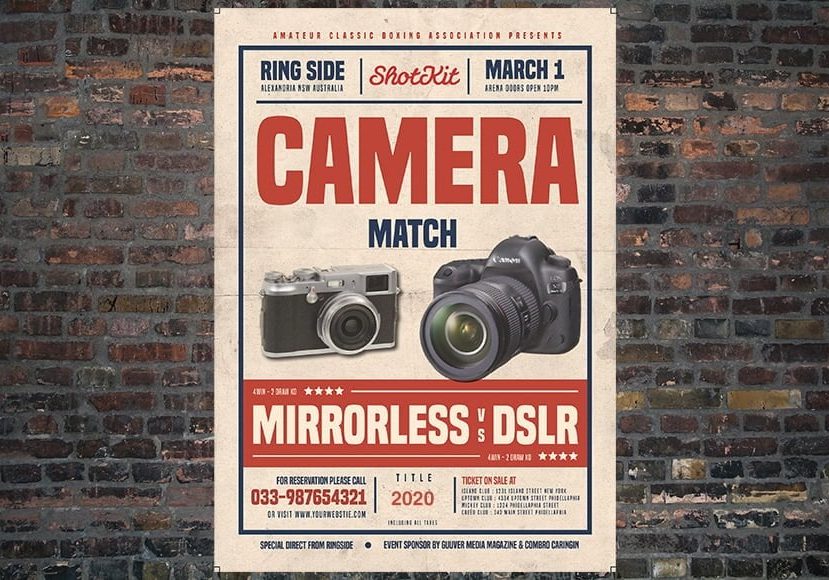
Mirrorless vs DSLR Cameras (18 Differences to Know)
Should you buy a DSLR camera in 2024? Are mirrorless cameras the future of photography? Why do some professionals still use DSLRs? Find out here!
If you’re trying to choose between mirrorless or DSLR cameras, this guide will make your buying decision much easier for you.
Here in 2024, manufacturers are still producing both types of camera, and they will continue to do so for the foreseeable future.
Both DSLR and mirrorless cameras offer various unique benefits to all levels of photographers.
However, it’s becoming harder to recommend one type over the other, as you’ll see below.
I’ve used both DSLRs and mirrorless cameras professionally for several years, and despite their age, I still recommend DSLR cameras in certain instances.
Let’s take a closer look at the mirrorless vs DSLR comparison to help you choose the best option.
DSLR Camera Versus Mirrorless Camera Summary
Mirrorless cameras are smaller, lighter, faster, and better for video. They also offer unique features, such as electronic viewfinders (instead of optical viewfinders), silent shooting, and focus peaking, and are better value for money. DSLRs have a bigger selection of lenses, offer better ergonomics and robustness, longer battery life, no shutter lag, and optical viewfinders with certain advantages.
Why Choose a Mirrorless Camera in 2024?
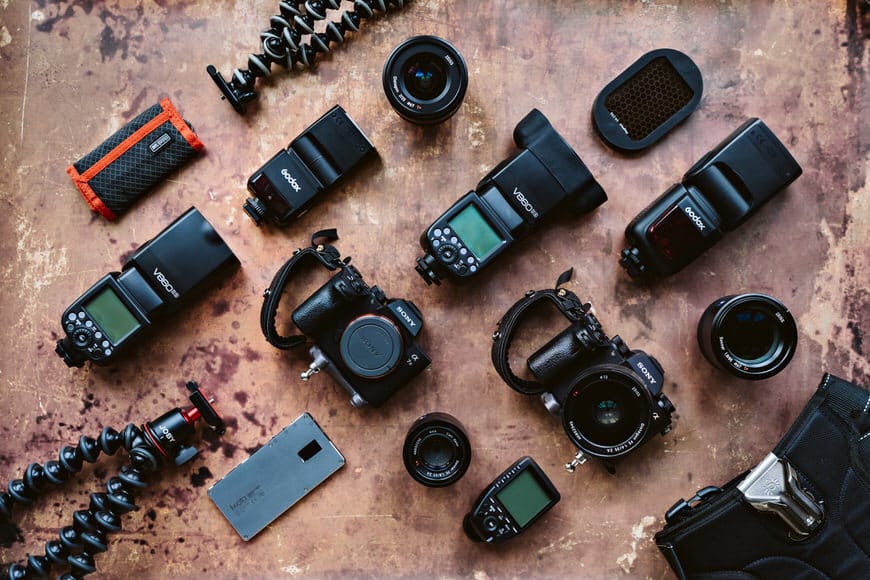
Image credit: Karen Flowers.
If you’re trying to make a decision based on image quality alone, there’s no distinguishable advantage – mirrorless and DSLR cameras can both offer excellent image quality. Your final image will depend on much more than a camera choice.
However, when comparing other features and characteristics, there are notable advantages of using mirrorless cameras over DSLRs. Years ago, no one could anticipate that the state of affairs would be like this, but mirrorless cameras have come a long way.
Admittedly, it’s getting harder and harder to recommend a DSLR camera with every year that passes. However, it doesn’t mean that they are passé.
Most reputable camera brands continue to release amazing DSLRs, (with some even inheriting mirrorless systems, such as the Nikon D780), but their advantages over mirrorless cameras are certainly dwindling.
However, DSLRs still can be great, and are far from dead!
DSLR vs Mirrorless Cameras: Pros and Cons
1. Size
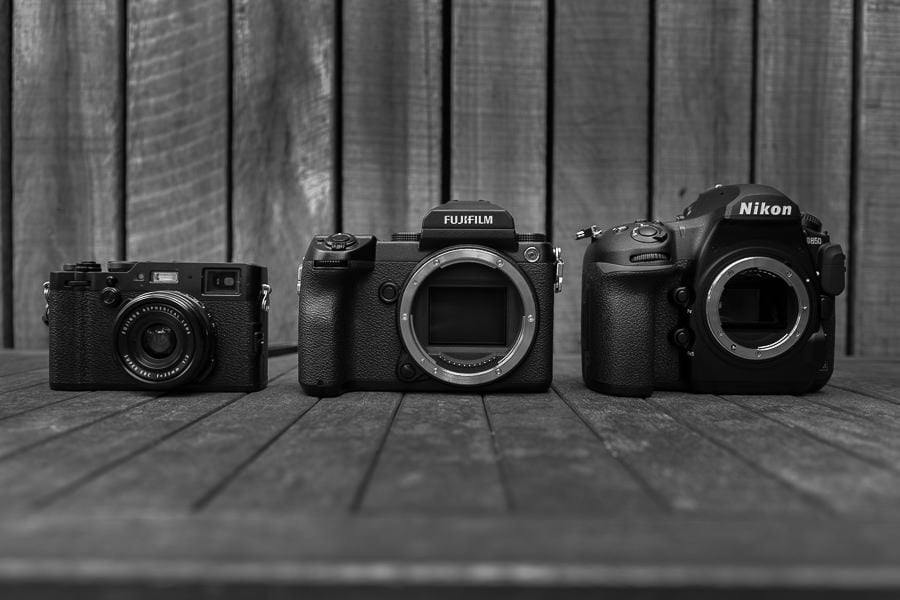
Camera makers: Fujifilm mirrorless APS-C, mirrorless medium format, Nikon full-frame DSLR
For those who travel, the allure of having a smaller, lighter camera system is one of the biggest motivators for investing in a mirrorless camera.
With a shorter flange distance (the distance between the mount of the lenses and the camera sensors), and no mirror or pentaprism, mirrorless camera manufacturers can produce smaller and lighter cameras.
While there’s not a huge difference in size and weight between DSLR vs mirrorless cameras with full-frame sensors, APS-C and micro-four-thirds image sensor cameras offer a noticeable advantage over their DSLR equivalents.
(There is the argument that the MFT format’s image quality across the board can’t compete with full-frame in a DSLR, but that’s more a question of sensor type than body format.)
Flagship DSLRs such as the Nikon D6 or Canon 1DX Mark III are noticeably bigger and heavier than the equivalent top-spec Sony a7R Mark IV mirrorless camera, for example.
As you can also see in the image above, even some medium format mirrorless models can be smaller than full-frame DSLRs – the Canon 5D Mark IV and Nikon D850 both have fantastic image quality, but they’re rather large and heavy.
(Incidentally, Fujifilm doesn’t make a micro four-thirds of full-frame mirrorless body.)
Having a smaller camera isn’t always a good thing, of course, with ergonomics suffering, as we’ll discuss later. But for people who frequently travel, it’s much better to own such a compact camera.
2. Electronic Viewfinders Vs. Optical Viewfinders
This is another one of the huge strengths of mirrorless cameras over DSLRs, and one of the key reasons for the mass exodus from one format to the other.
An electronic viewfinder (EVF) offers numerous benefits over an optical viewfinder (OVF), including:
- A brighter display of an electronic viewfinder is beneficial when viewing scenes and images in low light
- No viewfinder coverage issues
- Live Preview reduces the need to ‘Chimp’ after taking an image with an electronic viewfinder (WYSIWYG)
- No viewfinder blackout (selected models)
- Image Review in the electronic viewfinder benefits viewing in bright conditions
- Advanced shooting information can be displayed as an overlay in the electronic viewfinder, which isn’t possible with an optical viewfinder
- Digital zoom on an electronic viewfinder helps to check focus
- More focus points in the electronic viewfinder, reducing the need to focus + recompose with the optical viewfinder
- Advanced Subject Tracking AF Modes for increased accuracy with an electronic viewfinder
- Ability to ‘see’ Film Simulations (Fujifilm)
- Focus Peaking for simple manual focusing
- Eye damage prevention while shooting into the sun is much better with an electronic viewfinder
While having an EVF can be a game-changing experience, the humble optical viewfinder can still be beneficial.
Here are some reasons you may want to stick with a DSLR and its optical viewfinder:
- The optical viewfinder is always ‘on,’ so there’s zero start-up time lag when lifting it to your eye
- No shutter lag (the time between pressing the shutter and the image being captured)
- No digital lag or ‘blackout’ during burst shooting
- Higher optical quality, since with an optical viewfinder, you’re just looking through a piece of glass
- Zero energy consumption means no toll on battery life
If you shoot high-pressure events or fast-moving subjects on an image, shutter lag can be the difference between capturing or missing a shot.
In fact, this is one of the most common reasons why most photojournalists and paparazzi prefer to use DSLRs.
It’s also worth mentioning that some digital cameras, like the Fujifilm X100V, offer a hybrid electronic/optical viewfinder, giving the best of both worlds.
3. Value for Money
Although you can still get decent DSLRs for around $500, for around the same price, the equivalent mirrorless camera body is a lot more technologically advanced.
Producing the mirror mechanism in DSLRs is complicated for manufacturers, hence the elevated price.
In addition, the mirror mechanism will eventually wear out, and replacing it can also be expensive.
The more expensive the camera, the longer the ‘shutter life,’ although at some point, all mirrors will fail.
With an APS-C or full-frame mirrorless camera, there’s obviously no worry of anything wearing out in this way, so they benefit from greater longevity.
DSLRs and mirrorless cameras both range from affordable to expensive, but you get a lot more for your money when investing in mirrorless.
If you’re on a strict budget, you can usually find second-hand DSLRs for a bargain price, particularly since so many people are switching to the mirrorless format.
The outlier is the Sony a6000, an entry-level mirrorless that’s surprisingly available for under $500.
In this section of the mirrorless camera vs DSLR debate, DSLRs still win.
4. Advancement
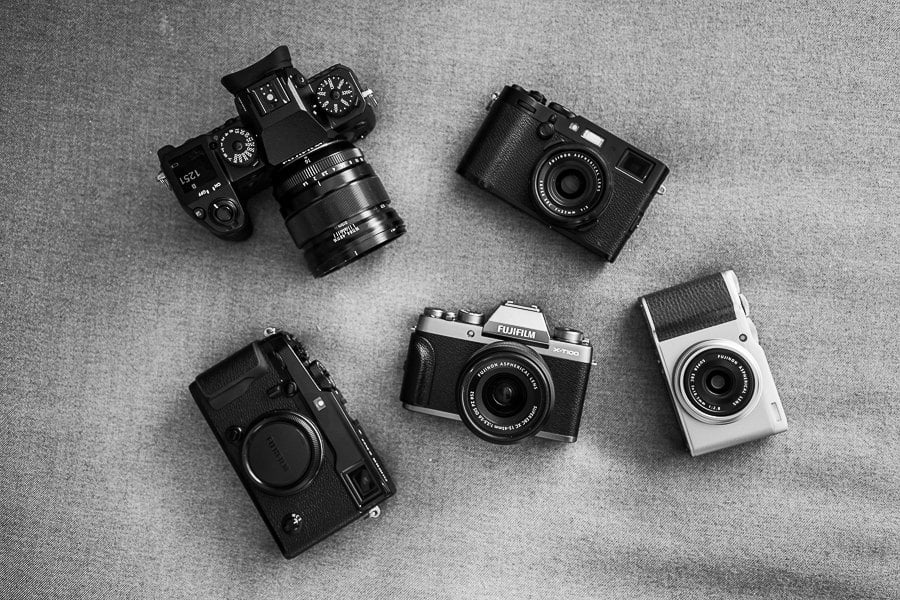
Fujifilm only produces mirrorless cameras, with no intention of ever releasing a DSLR.
Is Mirrorless better than DSLR? As the years go by, it’s looking like it is. When comparing recent DSLR vs mirrorless camera releases, you’ll notice that in terms of technological advancements, the mirrorless format offer far more innovation.
During the average year, a mirrorless camera owner is treated to multiple (free) firmware updates, which often greatly benefit the shooting experience and final image.
For example, a recent Sony firmware update for select Alpha full-frame and APS-C mirrorless cameras vastly improved autofocus, with the addition of continuous eye-tracking for people and animals.
With the somewhat hybrid Nikon D780, Nikon is showing that they are still pushing DSLR technology, albeit at a much slower pace than their mirrorless camera products.
5. Battery Life
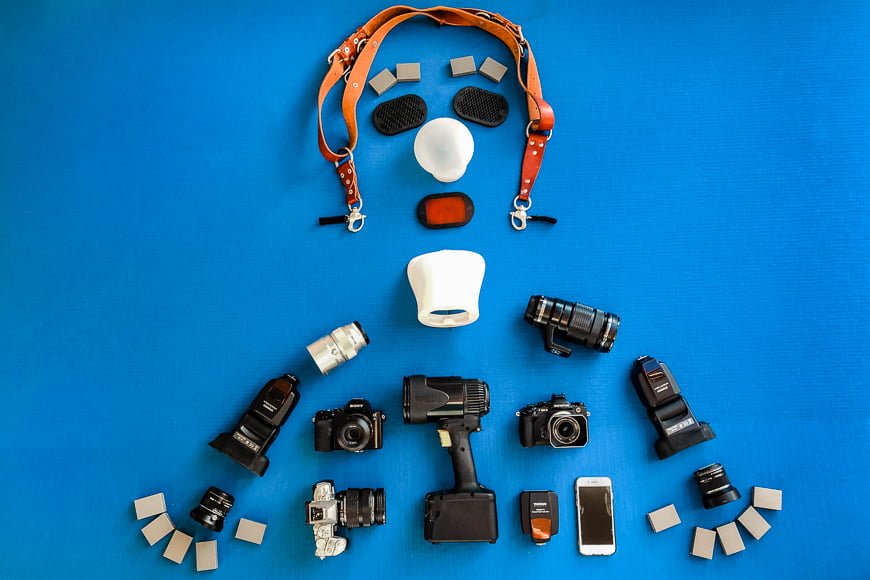
The need for multiple batteries is real! Image credit: Katrin Kullenger.
Many mirrorless cameras simply have more technology to power than DSLRs – the LCD screen and EVF vastly increase battery consumption & battery life, particularly when used at full brightness.
Fujifilm models typically struggle with battery life, with one charge offering a measly 3-400 shots per charge, compared to the equivalent DSLR that can usually offer twice this per charge.
Sony, on the other hand, offers full-frame bodies that can shoot over 800 shots per charge – my record with the Sony a7 III is 1,300 shots, although that was quite frugal with EVF and LCD use.
It can be annoying to carry around several batteries, not to mention the hassle of having to constantly change them.
Purchasing multiple own-brand batteries can also be a big additional expense, and carrying them in your suitcase can hinder plane travel on some airlines.
6. Durability
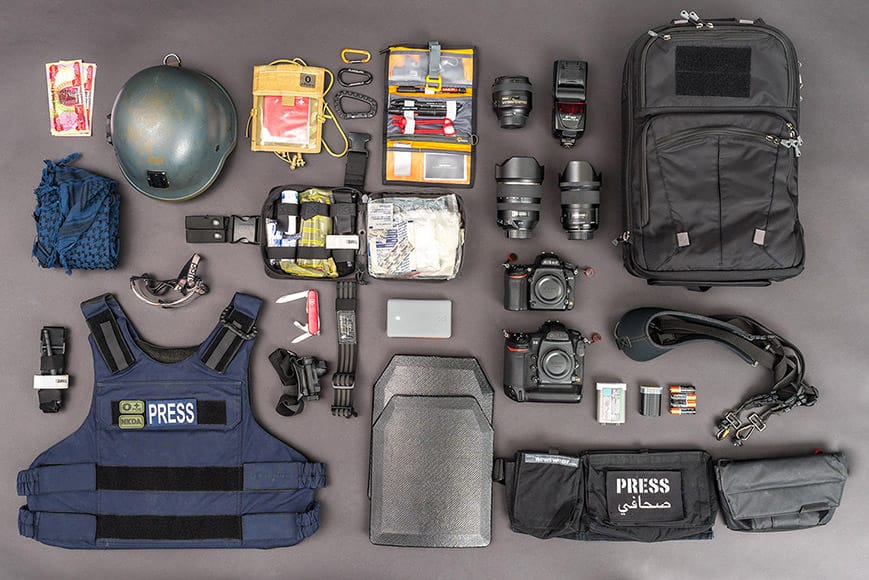
DSLRs are more commonly used by press/photojournalists due to their superior durability. Image credit: Alex Kuhni
This factor is debatable since both DSLR & mirrorless cameras offer durable, weather-sealed bodies that can withstand the elements.
However, if we compare flagship bodies, DSLR cameras can definitely take more knocks than the equivalent mirrorless camera – this is why you’ll usually still see war photojournalists or extreme sports photographers favouring these robust flagship DSLR bodies.
As for entry-level bodies, cost savings are made in both formats by all camera makers, although it has to be said that the DSLR range is more robust.
Yes, there’s the fragile mirror to dislodge in DSLRs, but mirrorless cameras have far more reliance on fancy technology, which is usually more fragile and susceptible to extreme conditions. Also, the amount of technological features have an effect on battery life.
There have also been cases of overheating in many mirrorless models after prolonged use in hot conditions (since they don’t yet include an internal fan), but the same can’t be said for DSLRs.
Also, since you’re using the rear LCD screen far more on mirrorless, this increases the risk of scratching or knocking it.
7. Exposure
This is one of the paramount reasons to choose a mirrorless camera over a DSLR and is beneficial for both beginners and professionals alike.
In place of a mirror directing light through the lenses up to the viewfinder, a mirrorless camera uses the image sensor to handle focus and exposure.
This image sensor gives you a what-you-see-is-what-you-get (WYSIWYG) experience, allowing you to preview your exposure either on the rear LCD screen of your camera or within the EVF.
With a mirrorless camera, you can see any adjustments you make to shutter speed, aperture, ISO, white balance, or anything else that will affect your final image, before taking the shot.
DSLRs allow you to do something similar in Live View mode. Basically, with Live View, you can see the preview on the LCD screen.
However, Live View is much more sluggish in operation, and unusable when capturing fast-moving subjects. Plus, not all DSLRs sport the Live View mode, though the vast majority do.
For beginners, this can help immensely, and can also provide a great learning experience – imagine being able to view the effects of each exposure element, before pressing the shutter button and taking the image!
More advanced photographers and even professionals benefit from increased efficiency since there’s much less need to review an image after it has been taken (aka chimping).
8. Shutter Noise
With no mirror, there’s no ‘mirror slap’ that you get with DSLRs. All you hear is the click of the shutter mechanism, and this sound can often be customized. Even the best DSLR camera can’t compete with a mirrorless in terms of shutter noise.
Several mirrorless cameras even offer completely silent shooting, which is a game-changer for wedding photographers, or those who need to operate in complete silence.
Many DSLRs have a ‘Silent Shooting’ feature, which separates the sound of the shutter from the mirror flap, with the mirror flipping down slowly once your finger is removed from the shutter button.
However, it’s less than ideal in practice and impractical for fast-moving action.
See also: what are the two types of camera shutters?
9. Autofocus
Mirrorless cameras benefit from having more points than DSLRs, and many also offer face and eye-tracking autofocus technologies.
These features mean that you can leave the autofocus largely down to the camera, instead of needing to manually select individual focus points, or focus and recompose.
However, the real benefits lie with the number of contrast detection and phase detection sensors.
With autofocus Phase Detection sensor arrays placed directly on the imaging sensor on mirrorless cameras, there’s also no difference between the center focus point and the one on the extreme edges of the frame.
(Some mirrorless cameras only offer Contrast Detection, which is inferior to the phase-detection system when it comes to tracking moving subjects, especially in low light.)
Sony models are typically superior when it comes to lightning-fast autofocus, with the Sony a9 and Sony a9II leading the range. However, recent Canon firmware updates to its EOS R lineup have seen significant improvements in this area.
DSLRs will typically offer the best autofocus in the center of the frame but struggle with the autofocus acquisition when a focus point is selected near the border of the frame.
It’s worth noting that autofocus speeds can also depend on the lens attached to the camera, with some lens models performing better than others.
10. Shutter Speeds
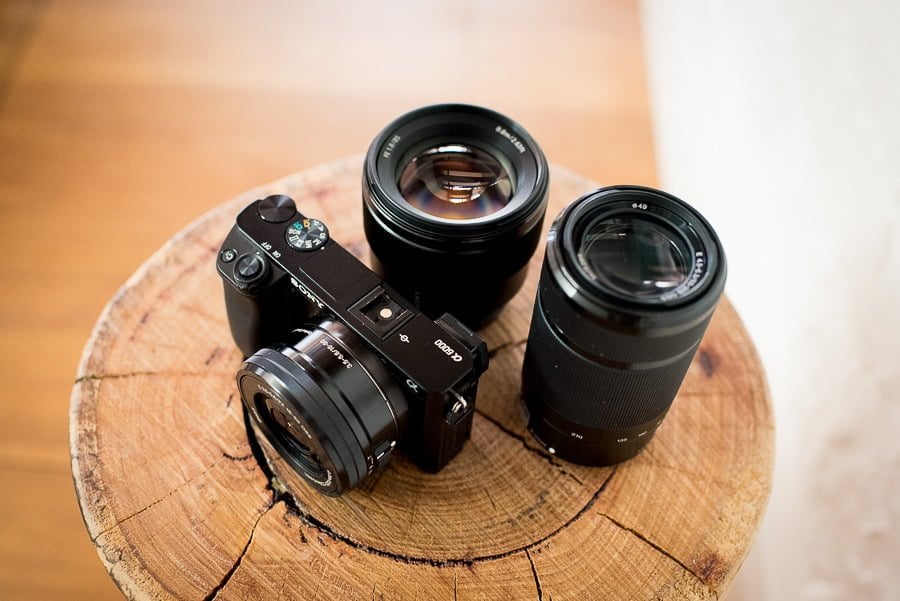
Even the entry-level Sony a6000 mirrorless camera can capture stills up to 11 fps.
In a DSLR, your frames per second (i.e., the rate you can capture images per second) are limited by the speed of the mirror’s movement.
In general, only higher-end DSLRs offer fast continuous shooting shutter speeds of over 10 fps.
With mirrorless cameras, some entry-level bodies such as the sub-$500 Sony a6000 offer 11 fps. However, other brands’ entry-level mirrorless models are mostly more expensive.
High-end DSLRs like the Nikon D5 may be able to offer incredible frame rates, but it’s also much more expensive than a Fujifilm X-T4 and Sony a9, for example, which offer a frankly ludicrous 20 FPS.
Of course, buffer speeds must also be taken into consideration (i.e., the ability for the camera to process and store the image before the photographer can take the next one), but in general, if you need to shoot fast-moving action, a mirrorless camera is the way to go.
11. Image Stabilization
Both mirrorless and DSLR cameras offer image stabilization sensors, which work by shifting part of the lenses or the image in the opposite direction to the shake of the camera.
However, DSLRs (and most mirrorless cameras) are limited to shifting the lenses in only 2 axes to counteract shake, known as two-axis stabilization (i.e., up or down and side to side.)
Some mirrorless cameras, like the Sony a7III and Sony a9II, offer in-body 5-axis image stabilization, which shifts the sensors along 3 additional axes: pitch (tilting up and down), yaw (turning side to side), and roll (rotating).
This can be hugely beneficial when shooting an image in low light, from a moving vehicle, or when recording 4k video.
Both formats offer lens image stabilization, and this can be used in conjunction with, or separate to in-camera IS. Depending on the lens you choose, you can benefit from increased low light performance when hand-holding the camera.
However, it has to be said that lens IS is inferior to in-body IS.
12. Recording Video

Fujifilm camera/lens collection. Image credit: Javier Abad
A big advantage of using a mirrorless camera to shoot video is that you can use the EVF. This allows you to preview your exposure, as well as make it much easier to see your composition in tricky lighting situations.
Another key difference is autofocus systems – most DSLRs can’t use Phase Detection autofocus while the mirror is up while recording video.
Why do you need Phase Detection?
Basically, Phase Detection sensors ‘guide’ the lens to make adjustments if the image from the other sensors is not identical. When the light reaches the Phase Detection autofocus sensor, if there’s any discrepancy, Phase Detection will correct it.
Instead, many DSLR cameras rely on Contrast Detection, which can lead to focus hunting (i.e., the camera struggling to acquire autofocus).
Some higher-end DSLRs use on-sensor Phase Detection AF in addition to Contrast Detection, or Dual-Pixel AF in the case of modern Canon bodies.
But still, mirrorless cameras offer faster autofocus systems for videos.
The size/weight advantage of mirrorless cameras can also benefit video shooting, especially for those who need to travel with a lot of gear or hand-hold for long periods.
Both DSLR and mirrorless cameras allow you to shoot 4k video, with the Canon R5 (a high-end mirrorless camera) offering 8k video recording.
Bear in mind, though, that videography isn’t always about numbers, and that processing a 4k video sometimes isn’t worth it.
When directly compared, more mirrorless cameras offer the 4k resolution, which is no wonder, as they are more modern. On the other hand, many DSLRs are limited to 1080p.
13. Lenses Calibration
DSLR cameras calculate focus via separate secondary focusing sensors, whereas most mirrorless cameras perform the calculation directly from the imaging sensors.
This means that in a DSLR, there are two areas that have the potential to undermine precise focus – the mirror and the lens itself.
Here’s the problem: Sometimes, both require calibration. This largely affects the time of the capture.
If the calibration doesn’t occur, your photos can be out of focus.
Since mirrorless cameras use the image sensor to acquire focus. This means that even if your lenses are slightly ‘off’ in some way, there’s no calibration or fine-tuning necessary.
14. Stability
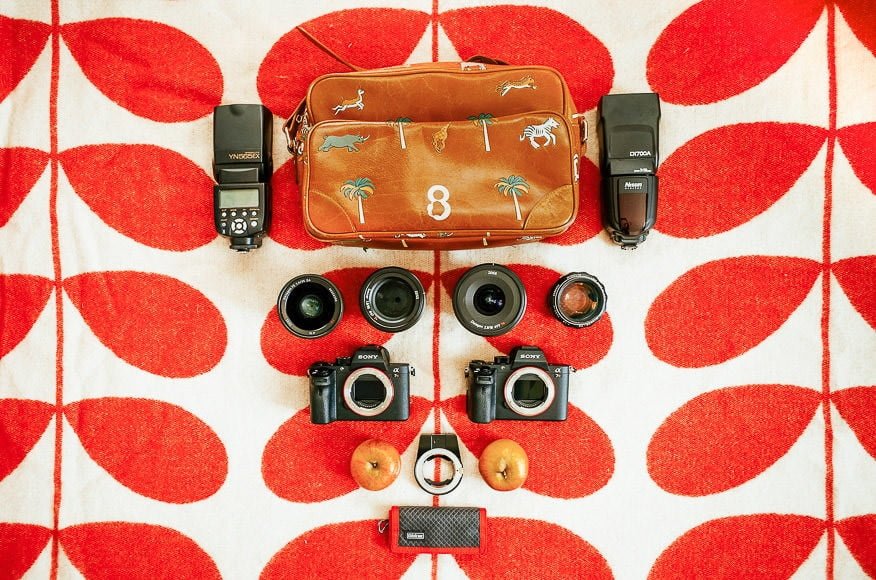
Sony mirrorless camera and lens system as used by The Steed
The lack of ‘mirror slap’ in a mirror-less camera means that there’s much less vibration when pressing the shutter button.
In fact, the only moving physical component inside a mirrorless camera is the camera shutter, but even this can be disabled when using the electronic shutter, which completely eliminates any movement.
This is a huge advantage to anyone who needs the sharpest, most precise image out of their camera.
Not only that – when your subject is moving, you definitely need a stable unit.
When used in combination with a sturdy tripod and a remote shutter release, mirrorless cameras offer unparalleled stability during image capture.
15. Maintenance
The sensor is usually completely exposed when you remove the lenses from mirrorless cameras, making it much easier to clean.
(The Canon R mirrorless body actually conceals the sensor automatically when mirrorless lenses are removed to prevent dust from entering.)
A DSLR camera on the other hand, not only has a mirror in the way of the sensor, but also houses various components under the mirror, giving dust a place to settle, and making proper cleaning much more difficult.
There’s also the benefit of a lower shutter count when using mirrorless, since you may be using the electronic shutter.
How about the mirrorless vs DSLR camera lifespan? Well, both can have a long life if properly used and maintained.
Typically, however, mirrorless cameras rely more on electronic components than DSLRs (the EVF, for example, which only exists on a MILC), so one could argue that’s there’s more to go wrong.
However, DSLRs often require more regular repair and maintenance than mirrorless cameras, which can impact their lifespan.
16. Native Lenses & Accessories
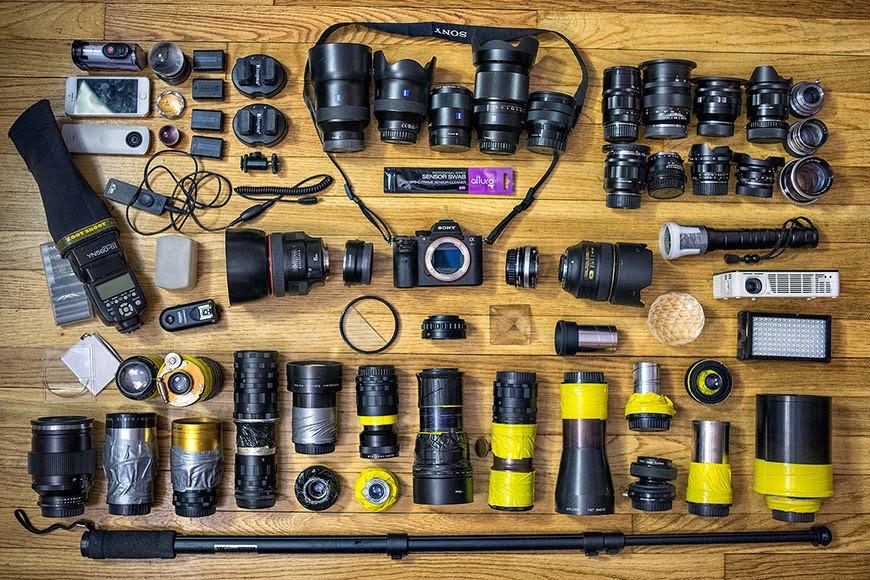
Unless you’re prepared to adapt your DSLR lens, mirrorless offers far fewer options | Image credit: Emily Kuliyev
DSLRs have been around for far longer than mirrorless cameras, which means there’s a much wider selection of lenses available.
Although it’s possible to ‘adapt’ a DSLR lens to be used on a mirrorless body, many people still prefer not to.
Certain speciality lenses such as super telephoto lenses or tilt-shift lenses simply aren’t available for the mirrorless system yet.
While macro, f/1.2, pancake, and other ‘niche’ lenses are produced for some mirrorless brands, there’s still not much lens variety to choose from.
Canon has been trying to pump out more Canon RF lenses for its EOS R series, and Nikon for its Z-series mirrorless cameras, but they still lag behind Sony and Fujifilm in terms of selection for the format.
The Canon RF lens lineup is also comparatively expensive, with no budget lens options currently available. The same is true for the Nikon lens lineup.
Both Canon and Nikon are clearly putting a huge focus of their efforts into mirrorless in 2024, so we expect to see more native lenses appearing soon.
DSLRs offer several affordable ‘nifty-fifty‘ lenses, for example, allowing you to experience a large f/1.8 aperture for around $100. This is still not the case for mirrorless cameras, with no ‘cheap’ lens available here in 2024.
The same goes for the accessories – there are some specific accessories that may exist for DSLRs, but are not yet available for mirrorless cameras.
As for the accessories that are available, there are far fewer native brand products to choose from, with photographers often having to rely on third-party manufacturers’ products.
So, although it’s predictable that the situation will change in the foreseeable future, the DSLR vs mirrorless battle in terms of accessories is won by the veteran contestant.
17. Ergonomics
While there are exceptions, the general trend has been to produce mirrorless systems that are as small and compact as possible.
In doing so, this has had a negative effect on the ergonomics of many of the most popular mirrorless cameras.
From my personal experience, I’ve always found Sony Alpha and Fujifilm X-series mirrorless cameras rather uncomfortable to use.
There are some exceptions, but it’s only recently that these brands have been producing cameras with ergonomics that are more akin to the average DSLR.
Despite some recent Sony and Fujifilm models offering better ergonomics than their predecessors, generally speaking, DSLRs offer deeper grips and more spaced-out buttons, lending to a more comfortable shooting experience – especially for those of us with bigger hands!
Canon and Nikon have taken a different approach with the release of their R and Z series cameras, respectively, choosing to replicate (and improve on) the ergonomics of their popular DSLRs.
Whether this undermines one of the main advantages of shooting mirrorless (i.e., the reduced size) is arguable, but one thing’s for sure – larger bodies offer better balance and a more comfortable shooting experience when using larger lenses.
18. Shooting Experience
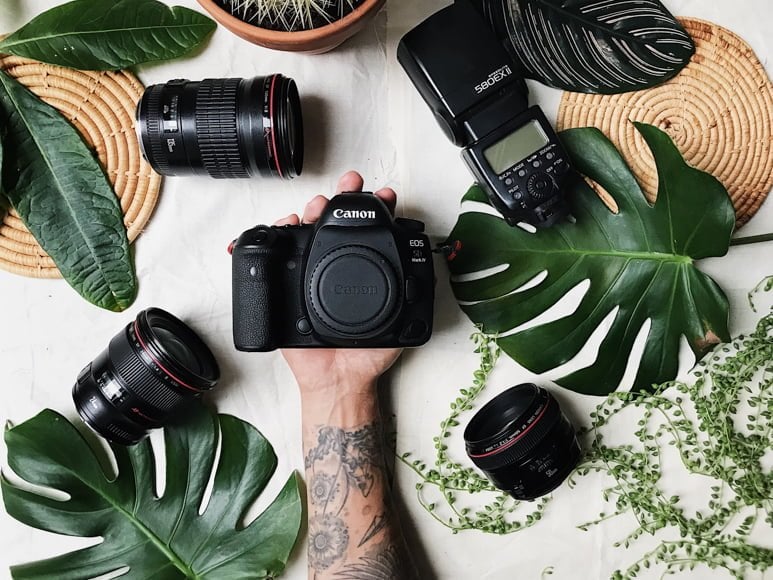
DSLR system of wedding photographer Craig Williams.
This final factor is subjective, but preferring DSLRs mostly holds true if you speak to people who’ve shot with both systems.
Since mirrorless cameras do a lot of the hard work for you (with regards to focus and exposure), it’s sometimes akin to ‘shooting with a mini-computer.
DSLRs, on the other hand, force the photographer to make exposure calculations themselves, with the OVF simply providing a window to peer through.
For some, this experience is valuable and more enjoyable than letting a camera take over the image.
From my perspective as a professional wedding photographer, a mirrorless camera undoubtedly makes my job easier. However, I found shooting with DSLRs more fun and rewarding.
For a beginner, choosing a DSLR camera could mean a more thorough understanding of exposure, or at the very least, a way to ‘go back,’ if for whatever reason they can no longer use, or no longer wish to use a mirrorless camera.
It’s a bit like knowing how to drive a manual car even though you drive an automatic ;-)
DSLR cameras are not the freshest of innovations, but it doesn’t mean that they are lacking in attractive and attention-worthy models.
The flagship Nikon D series and Canon 1D series cameras are reserved for professionals who need the most robust weather-proof bodies, the longest battery life, excellent autofocus, and the fastest frame image rates.
You will also find a wide array of native accessories and lenses for these models that will enrich your photography journey.
Just like with other DSLRs, the trade-off with these is in size, weight, and cost.
DSLR vs Mirrorless: Frequently Asked Questions
Will mirrorless cameras replace DSLR?
Judging by the technological advances, DSLRs still dominate the market in sales but are definitely a dying breed. Although the first mirrorless camera was made 11 years ago, it offers more functionalities to DSLRs. Whether mirrorless cameras will replace them entirely is arguable, but we can definitely expect a reduction in DSLR camera releases in the coming years.
Do professionals use mirrorless cameras?
Yes, but they also use DSLRs, too, depending on the genre of photography. In fact, many people switch between DLSR vs mirrorless cameras. Some are advocates that mirrorless lenses and autofocus are still not there yet, and prefer to use DSLRs. Others claim that electronic viewfinders are less distracting than optical viewfinders, and don’t mind their effect on the battery life of mirrorless cameras. It all depends on your style and preferences.
Are mirrorless cameras better in low light?
Both DSLRs and mirrorless cameras can perform well in low light. It’s more a question of the size of the sensors than the camera format – bigger sensors allow more light to be captured. So, it doesn’t matter whether you’re using DLSR vs mirrorless cameras when the light is scarce, but which sensors you use. In addition to having bigger sensors, you can try increasing the ISO settings for a better image quality during dusk or night.
Can I use a DSLR lens on a mirrorless camera?
In most cases, yes – you can use DSLR lenses on a mirrorless camera body, but most of them are not interchangeable. That means you would be able to use DSLR lenses only with a specific adapter that you would use to mount them to your mirrorless camera. The market of these adapters has also developed over recent years, so nowadays, you can pair pretty much any lens you already own with a mirrorless body.
Do mirrorless cameras take better pictures?
No, mirrorless cameras don’t take better pictures than DSLRs. The quality of the final image will depend on the camera, lens and the experience of the person taking the photo. There’s no point examining a DSLR vs mirrorless picture comparison since it would be impossible to tell the difference.
Will the Canon DSLR line eventually end?
It’s difficult to predict whether the Canon DSLR line will end for sure, but it’s likely that mirrorless cameras will be the main focus for Canon in years to come. DSLRs remain a popular and product line for the company, despite declining sales.
What’s the difference between single lens reflex and mirrorless?
Single Lens Reflex (SLR) and Mirrorless cameras are two different types of digital cameras with different technologies.
SLR cameras have a mirror mechanism that reflects light from the lens to an optical viewfinder, allowing the photographer to see the image in real time, like peering through a window.
When the image is captured, the mirror moves out of the way to expose the image sensor to light.
Mirrorless cameras do not have a mirror mechanism. Instead, they use an electronic viewfinder (EVF) or an LCD screen to preview the image. This allows for a more compact design and lighter weight compared to SLRs.
Mirrorless cameras also offer faster autofocus and improved video capabilities compared to SLRs. Many photographers prefer the WYSIWYG experience of using an EVF over an OVF.
Are mirrorless cameras sharper than DSLR?
No, there’s no evidence to show that a comparable mirrorless camera is any sharper than a DSLR – much of the sharpens of the photos depends on the skills of the photographer, shutter speed, ISO, time of day, and quality of the lens.
Should I replace my DSLR with a mirrorless?
No, if you’re only after image quality. However, if you need a camera with better ISO and video performance, then mirrorless is the way to go.
Are DSLR cameras obsolete?
No, however, some camera manufacturers are starting to move away from DSLRs and are focusing more on developing mirrorless cameras.
Can Nikon mirrorless use DX lenses?
Yes, you can use DX lenses with Z-mount Nikon mirrorless cameras using an adapter.
What are the disadvantages of a mirrorless camera?
One of the disadvantages of a mirrorless camera is the lens choices are pretty limited. Additionally, most mirrorless cameras don’t have a long battery life.
Are DSLR cameras going away?
DSLR cameras might stay or go away depending on the market’s demand.
Are mirrorless cameras cheaper than DSLRs?
No, mirrorless cameras are more expensive than DSLRs for the most part.
Is DSLR or mirrorless better for portraits?
Both DSLRs and mirrorless cameras perform well when shooting portraits.
Should I upgrade to a mirrorless camera?
Yes, but only if lens availability and shorter battery life won’t be an issue for you.
What makes a mirrorless camera different from an SLR?
As the name suggests, mirrorless cameras don’t have mirrors while SLRs do.
Do Canon EF lenses work on mirrorless?
Yes, Canon EF lenses work on mirrorless cameras with the help of the Canon EF-M Lens Adapter Kit.
Do mirrorless cameras take better pictures?
Both mirrorless and DSLR cameras take equally great pictures. However, mirrorless technology is quickly advancing, so they might coon overtake DSLRs.
Mirrorless vs DSLR Cameras: Final Words
If you’ve read this far, it should be clear to you that mirrorless cameras offer a lot more for your money here in 2024. That’s the overall conclusion of the whole DSLR – mirrorless debate.
Some people call it the mirrorless revolution.
However, DSLRs are not dead just yet! They still offer several advantages over their modern counterparts, although how important are they to you?
When choosing a camera, it’s important to consider the brand – Fujifilm and Sony are heavily invested in the mirrorless format, whereas Nikon and Canon have many years of experience in the DSLR realm. They also offer many more lenses.
Recently, Canon and Nikon have started to produce some excellent full-frame and APS-C mirrorless camera bodies, but they still have some catching up to do.
At the end of the day, both DSLR and mirrorless cameras can produce stellar images. Many amateur and professionals still use and purchase DSLRs, and have no intention of switching to the mirrorless format.
Similarly, many have ditched DSLRs, invested in the mirrorless system, and would never go back to DSLR (or have perhaps never even used a DSLR!)
Finally, there are some ‘hybrid’ users who get the best of both worlds, or perhaps, can’t bear to let go of their beloved DSLR. I fall into this camp :-)
I hope this guide has been useful to you. Leave a comment below with the type of camera you use, and why you chose it.





